Mechanical Keyboard Complete Guide: Features by Type and Selection Guide
Mechanical keyboards have become more than just input devices—they’re a hobby world of their own. Loved for their customizability, typing feel, and durability, mechanical keyboards have gained popularity among many computer users. This article explains the appeal of mechanical keyboards, their types, and how to choose one that’s right for you.
Table of Contents
- What is a Mechanical Keyboard?
- Types of Mechanical Switches
- Keyboard Sizes and Layouts
- Customizing Mechanical Keyboards
- Selection Criteria
- Recommended Japanese Mechanical Keyboards
- Summary
What is a Mechanical Keyboard?
Unlike common membrane keyboards, mechanical keyboards have independent switches for each key. These switches improve typing feel, durability, and responsiveness.
Features of Mechanical Keyboards
- Superior Typing Feel: Clear feedback makes typing less fatiguing even during extended sessions
- High Durability: Typically withstands 50 to 100 million keystrokes
- Customizability: Can be customized with different keycaps, switches, and more
- Precise Key Input: Independent keys handle simultaneous keypresses better
Difference from Membrane Keyboards
Membrane keyboards have conductive patterns placed between thin plastic sheets. When a key is pressed, the upper sheet contacts the lower sheet to complete the circuit.
- Cost: Mechanical keyboards are more expensive than membrane keyboards
- Typing Feel: Mechanical keyboards provide distinct feedback, while membrane keyboards feel softer and less defined
- Noise: Mechanical keyboards are relatively louder, while membrane keyboards are quieter
- Durability: Mechanical keyboards have longer lifespans, while membrane keyboards have shorter lifespans
Types of Mechanical Switches
The heart of a mechanical keyboard is its switches. Major switch manufacturers include Cherry MX and Japanese makers like Topre. Switches broadly fall into three categories: “Linear,” “Tactile,” and “Clicky.”
Linear Switches
Linear switches provide uniform resistance when pressed, with no bump or tactile feedback during the keystroke. The actuation force (force required to press) remains constant.
- Cherry MX Red: Light typing feel (45g), popular for gaming
- Cherry MX Black: Slightly heavier typing feel (60g), helps prevent accidental inputs
- Cherry MX Silver: Very light with short travel distance (45g), designed for high-speed input
Tactile Switches
Tactile switches feature a “bump” that can be felt when pressing the key. This bump provides tactile feedback that confirms key actuation.
- Cherry MX Brown: Light typing feel (45g) with subtle tactile feedback, suitable for office use
- Cherry MX Clear: Heavier typing feel (65g) with stronger tactile feedback
Clicky Switches
Clicky switches combine tactile feedback with an audible “click” sound. These provide the strongest sensory feedback while typing.
- Cherry MX Blue: Clear clicking sound with moderate typing force (60g)
- Cherry MX Green: Heavier typing feel (80g) with strong clicking sound
Electrostatic Capacitive Switches
These are high-end switches developed by Japanese company Topre, known for their unique feel.
- Topre: Premium switches with a unique smooth typing feel and good sound dampening
- NISKE: Electrostatic capacitive switches similar to Topre
Explanation of Switch Colors: Red, Brown, and Blue Switches
Mechanical keyboard switches are often identified by colors, with red, brown, and blue being the most common, each with distinct characteristics.
Red Switches
- Type: Linear
- Characteristics:
- Uniform pressing feel
- No tactile feedback or “bump”
- Light actuation force (typically around 45g)
- Quiet operation
- Suitable for:
- Gaming (good for rapid keypresses)
- Extended typing sessions
- Quiet environments
- Advantages: Lightweight and less fatiguing, relatively quiet
- Disadvantages: Less typing feedback, easier to make typing errors
Brown Switches
- Type: Tactile
- Characteristics:Small “bump” felt when pressing
- Relatively light actuation force (typically around 45g)
- No click sound but provides tactile feedback
- Suitable for:General typing
- Programming
- Office environments
- Advantages: Moderate feedback and comfortable typing feel, relatively quiet
- Disadvantages: Some users find the tactile feedback too subtle
Blue Switches
- Type: Clicky
- Characteristics:Distinct “click” sound
- Strong “bump” when pressing
- Moderate actuation force (typically around 60g)
- Suitable for:Those who enjoy the typing experience
- Personal use
- Environments where noise isn’t an issue
- Advantages: Clear feedback, highly satisfying typing experience
- Disadvantages: Loud noise, not suitable for offices
Other Switch Colors
- Black Switches: Heavier (60g) linear switches than red
- Green Switches: Heavier (80g) clicky switches than blue
- Clear Switches: Heavier (65g) tactile switches than brown
- Silver Switches: Similar weight to red but with a shallower actuation point
Keyboard Sizes and Layouts
Another appeal of mechanical keyboards is the variety of sizes and layouts available.
Classification by Size
- Full-size (100%): Standard layout including numpad
- Tenkeyless (TKL/80%): Compact layout without numpad
- 75%: Even more compact TKL layout
- 65%: Keeps arrow keys but removes function keys
- 60%: Minimal layout without arrow or function keys
- 40%: Ultra-compact layout without number keys
Key Layouts
- QWERTY Layout: Most common layout
- ANSI Layout: English layout centered on the US
- ISO Layout: European-centered layout (larger Enter key)
- JIS Layout: Japanese layout (with kana characters)
Connection Methods
- Wired Connection: Features stable connection and minimal latency
- Bluetooth Connection: Convenient cable-free use
- 2.4GHz Wireless Connection: More stable than Bluetooth
Customizing Mechanical Keyboards
A major appeal of mechanical keyboards is their customizability.
Keycap Customization
Keycaps significantly change the keyboard’s appearance.
- Materials: ABS, PBT, ABS double-shot, etc.
- Profiles: OEM, Cherry, SA, DSA, etc. with different heights and shapes
- Printing Methods: Laser printing, dye sublimation, double-shot, etc.
- Themes: Various keycap sets based on anime, games, movies, etc.
Switch Customization
- Switch Replacement: Hot-swappable keyboards allow easy switch changing
- Switch Lubrication: Applying lubricant to switches creates a smoother typing feel
- Spring Replacement: Replacing the springs inside switches to adjust weight
Other Customizations
- Case Replacement: Cases can be swapped for different materials like aluminum or wood
- Stabilizer Improvements: Enhancing stability for larger keys
- Cable Customization: Using braided or detachable custom cables
Selection Criteria for Mechanical Keyboards
When choosing a mechanical keyboard, consider the following factors:
| Selection Criteria | Description | Options |
|---|---|---|
| Purpose | Main intended use | • Gaming • Typing/Programming • Business/Office • Creative work |
| Size | Keyboard size | • Full-size (100%) • Tenkeyless (80%/TKL) • 75% • 65% • 60% |
| Connection Method | How it connects | • Wired • Bluetooth • 2.4GHz wireless • Both wired/wireless |
| Switch Type | Type of key switch | • Linear (Red type) • Tactile (Brown type) • Clicky (Blue type) • Electrostatic capacitive (Topre) |
| Key Layout | Key arrangement | • ANSI (US) layout • ISO layout • JIS (Japanese) layout |
| Customizability | Ease of modification | • Hot-swappable • Keycap replacement only • Firmware customization |
| Budget | Price range | • Entry level ($50-100) • Mid-range ($100-200) • High-end ($200+) |
Recommended Japanese Mechanical Keyboards
Recommended Keyboards by Japanese Manufacturers
| Manufacturer | Model | Size | Switch | Connection | Price Range | Features |
|---|---|---|---|---|---|---|
| Topre | REALFORCE R2 【AD】Amazon | Full-size | Electrostatic capacitive (Topre) | Wired | High ($230-300) | High-quality typing feel, durability, quietness |
| Topre | REALFORCE 87U | TKL | Electrostatic capacitive (Topre) | Wired | High ($200-270) | Compact and high-quality, for professionals |
| PFU | HHKB Professional HYBRID Type-S 【AD】Amazon | 60% | Electrostatic capacitive (Topre) | Wired/Bluetooth | High ($280-320) | For programmers, portability, quiet operation |
| PFU | Happy Hacking Keyboard Classic 【AD】Amazon | 60% | Electrostatic capacitive (Topre) | Wired | Mid-High ($180-220) | Simple design, lightweight |
| FILCO | Majestouch 2 【AD】Amazon | Full-size | Cherry MX | Wired | Mid ($140-180) | High durability, simple design |
| FILCO | Majestouch MINILA-R 【AD】Amazon | 60% | Cherry MX | Wired | Mid ($140-180) | Compact, customizable |
| FILCO | Majestouch Convertible 2 【AD】Amazon | Full-size | Cherry MX | Wired/Bluetooth | Mid-High ($180-220) | Wireless connectivity, good battery life |
| ARCHISS | ProgresTouch RETRO TINY | TKL | Cherry MX | Wired | Mid ($90-140) | Retro design, beginner-friendly |
| ARCHISS | Maestro 2S | TKL | Cherry MX | Wired | Mid ($140-180) | Aluminum frame, premium feel |
Recommended by User Type
For Beginners
- ARCHISS ProgresTouch RETRO TINY
- Features: Reasonable price, good basic performance, appealing design
- Price: Around $90
- Switches: Cherry MX Red, Brown, or Blue
- Size: Tenkeyless
- Buffalo BSKBC400BK
- Features: Affordable price, ideal for entry-level users
- Price: Around $75
- Switches: Japanese mechanical switches
- Size: Full-size
For Typing & Programming
- HHKB Professional HYBRID Type-S
- Features: High-quality typing feel, less fatiguing for extended typing
- Price: Around $300
- Switches: Electrostatic capacitive (Topre)
- Size: 60%
【Ad】Amazon – HHKB Professional HYBRID Type-S
- FILCO Majestouch 2
- Features: Stable typing feel, high durability
- Price: Around $150
- Switches: Cherry MX Brown
- Size: Full-size
【Ad】Amazon – FILCO Majestouch 2
For Gaming
- ARCHISS Maestro 2S
- Features: Fast response time, N-key rollover
- Price: Around $170
- Switches: Cherry MX Red
- Size: Tenkeyless
- Topre REALFORCE 87U
- Features: Premium quality, optimized for professional gaming
- Price: Around $230
- Switches: Electrostatic capacitive (Topre)
- Size: Tenkeyless
For Business & Office
- Topre REALFORCE R2
- Features: Quiet operation, comfortable typing, premium feel
- Price: Around $250
- Switches: Electrostatic capacitive (Topre)
- Size: Full-size
【Ad】Amazon – Topre REALFORCE R2
- FILCO Majestouch Convertible 2
- Features: Wireless connectivity, clean design
- Price: Around $190
- Switches: Cherry MX Brown
- Size: Full-size
【Ad】Amazon – FILCO Majestouch Convertible 2
Mechanical Keyboard Selection Matrix
Use the matrix below to find the keyboard that best fits your needs:
| Beginner | Gaming | Typing | Business | Programming | Wireless | |
|---|---|---|---|---|---|---|
| REALFORCE R2 | ★★★ | ★★★ | ★★ | |||
| REALFORCE 87U | ★★★ | ★★ | ★★★ | |||
| HHKB Professional HYBRID | ★★ | ★ | ★★★ | ★★★ | ||
| HHKB Classic | ★★ | ★ | ★★★ | |||
| Majestouch 2 | ★★ | ★★ | ★★★ | ★★ | ★★ | |
| Majestouch MINILA-R | ★ | ★★ | ★★★ | |||
| Majestouch Convertible 2 | ★★ | ★ | ★★ | ★★★ | ★ | ★★★ |
| ProgresTouch RETRO TINY | ★★★ | ★★ | ★★ | ★ | ★ | |
| Maestro 2S | ★ | ★★★ | ★★ | ★ | ★★ |
The number of ★ indicates suitability (★★★: Highly suitable, ★★: Suitable, ★: Somewhat suitable)
Summary
Mechanical keyboards are more than just input devices—they’re a hobby world where you can incorporate your personal preferences. Options for switch types, sizes, key layouts, and customizability are virtually limitless.
When purchasing your first mechanical keyboard, it’s advisable to first select a switch type that matches your use case and preferences, then consider size and layout. Gradually customizing keycaps and cases will help you create a keyboard that better suits your needs.
Since typing is a daily activity, finding a keyboard that fits you can not only improve work efficiency but also make typing itself enjoyable. We hope you find your perfect keyboard.
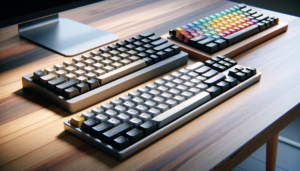









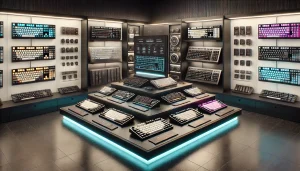
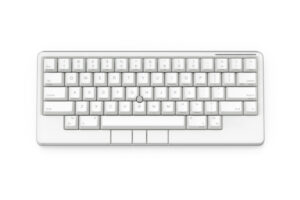


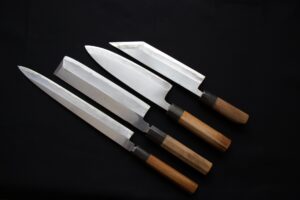

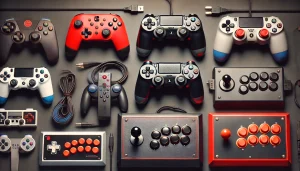

Comments